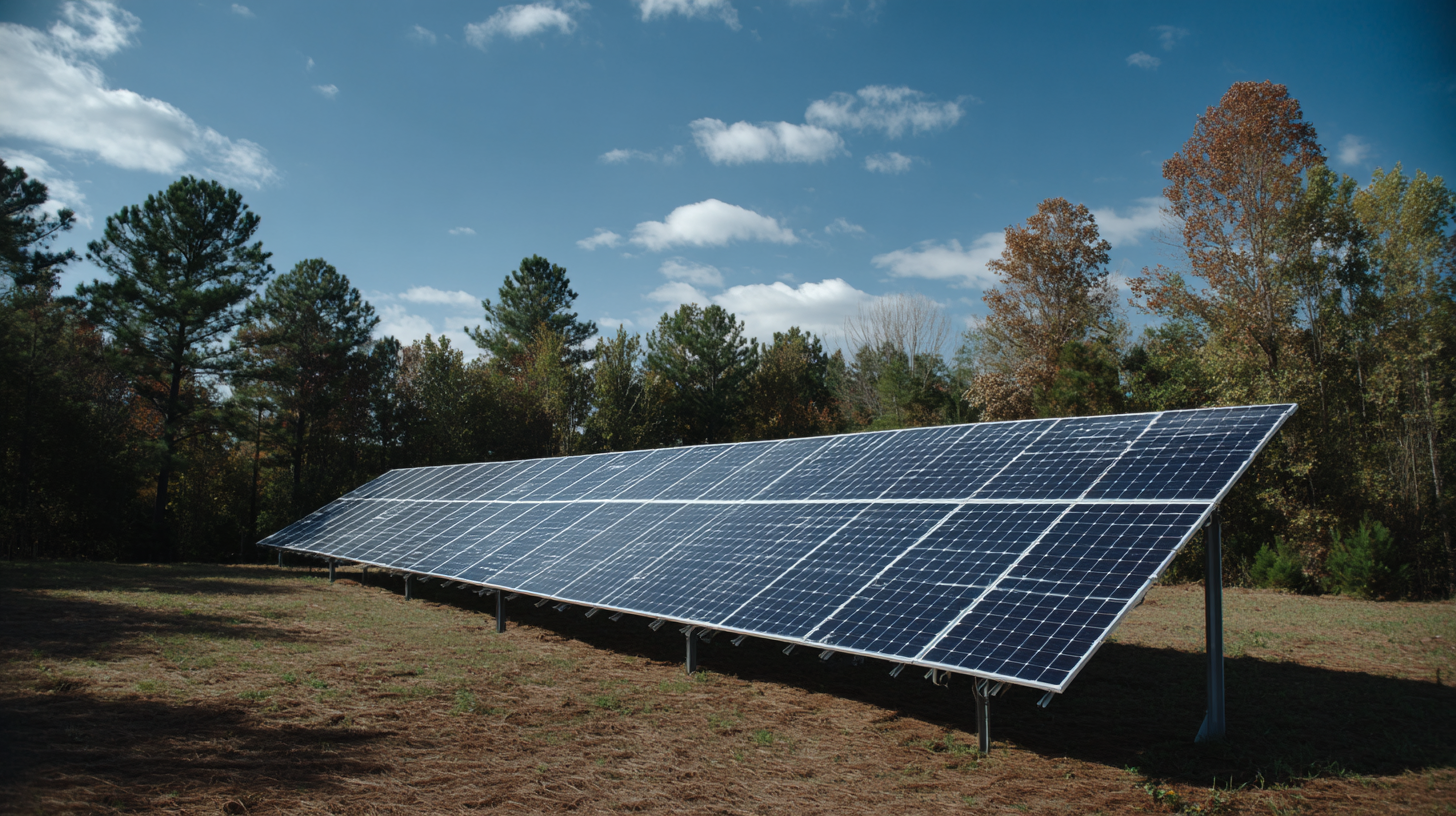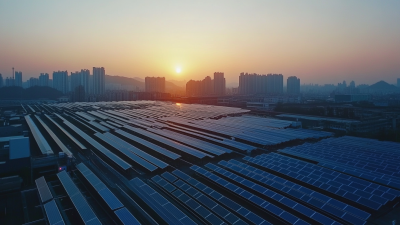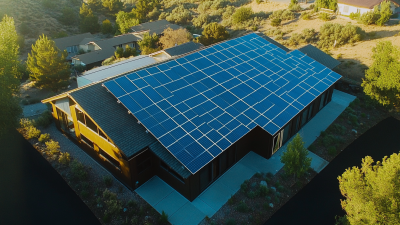Unlocking the Future of Energy: A Beginner's Guide to Solar Installation Benefits and Myths
As our world faces increasing energy demands and environmental challenges, the shift towards sustainable solutions has never been more crucial. One of the most promising avenues for achieving this is through solar installation, which harnesses the power of the sun to generate clean, renewable energy. However, despite its growing popularity, many potential users are still hesitant due to lingering myths and misconceptions surrounding solar technology. This guide aims to demystify the benefits of solar installation, providing beginners with essential insights into how it can lead to significant savings, energy independence, and a positive impact on the planet. By debunking common myths and showcasing the undeniable advantages of adopting solar energy, this introduction seeks to empower individuals to make informed decisions about their energy future.

Benefits of Solar Installation: Environmental and Financial Advantages
Investing in solar installation offers substantial environmental and financial advantages that can transform how we harness energy. One of the most notable benefits is the reduction of carbon emissions. By utilizing solar power, individuals contribute to a cleaner atmosphere, reducing reliance on fossil fuels and combating climate change. Additionally, many regions offer incentives, such as tax credits and rebates, making the initial investment more financially appealing.
Tip: When considering solar installation, research local incentives that can significantly lower installation costs. Many homeowners are unaware of the various financial assistance programs available in their area, so checking with local utilities can prove beneficial.

Financially, solar installation can lead to significant savings on electricity bills. Once a solar system is installed, homeowners can eliminate or greatly reduce their energy costs, leading to savings over time. Furthermore, solar panels can increase property value, making it a wise long-term investment.
Tip: To maximize your savings, monitor your energy consumption and consider upgrading to energy-efficient appliances. This approach not only lowers your energy needs but also enhances the benefits of your solar installation.
Common Myths About Solar Energy: Debunking Misconceptions
Solar energy has emerged as a key player in the quest for sustainable energy solutions, yet misunderstandings persist. One common myth is that solar panels are only effective in sunny climates. In reality, advancements in solar technology mean that they can generate power even in cloudy or rainy conditions. According to the U.S. Department of Energy, up to 70% of solar energy can be captured in overcast conditions, making solar systems viable across various geographic locations.
Another misconception is that solar energy is prohibitively expensive. In fact, the Solar Energy Industries Association reports that the cost of solar installations has dropped by more than 70% since 2010, making it more accessible than ever. Many states offer incentives and tax credits, further reducing the initial investment.
**Tips**: Consider researching local incentives and financing options to make solar energy more affordable in your area. Additionally, consult with professionals to evaluate your home’s solar energy potential, ensuring an informed decision that maximizes your investment. Embracing solar energy not only helps reduce your carbon footprint but can also lead to significant long-term savings.
Benefits of Solar Energy Installation
This chart illustrates the key benefits of solar energy, highlighting the percentage of homeowners who recognize each advantage based on recent surveys.
Essential Steps for a Successful Solar Installation Process
When considering solar installation, understanding the essential steps can significantly enhance your experience and ensure a successful transition to renewable energy. First, conducting a thorough energy assessment is crucial. This involves analyzing your current energy usage and determining the optimal system size to meet future needs. By understanding your consumption patterns, you can better identify potential savings and the investment's payback period.
Another vital step is researching reliable solar providers. Not all companies are created equal; selecting a trustworthy installer ensures quality work and long-term support. Look for reviews, ask for customer references, and verify their certifications. A reputable provider will guide you through the entire process, from system design to obtaining necessary permits.
Tips: When evaluating solar providers, consider asking about their warranty offerings. A solid warranty can protect your investment and provide peace of mind. Additionally, check if they offer comprehensive post-installation services, such as maintenance and monitoring. These steps can greatly simplify your solar journey and maximize benefits while debunking myths surrounding solar technologies.
Cost Considerations: Understanding the Investment in Solar Technology
The investment in solar technology is increasingly seen as a strategic approach to energy transition, especially amidst rising global concerns about carbon emissions from heating systems. As urban and rural residential areas account for nearly 60% of the carbon emissions related to building operations, the promotion of low-carbon heating technologies becomes crucial. Understanding the cost considerations related to solar installation can help homeowners and businesses make informed decisions that expedite this transition.
Moreover, while initial costs might seem substantial, the long-term financial benefits and environmental impact of solar technology often outweigh these concerns. With global markets forecasting substantial growth in solar-related sectors, such as a projected rise in the space-based solar energy market to $537.68 billion by 2024, the economic viability of investing in solar solutions is continually improving. As solar technology advances, myths surrounding the cost-effectiveness and reliability of solar energy are being debunked, paving the way for a more sustainable energy future.
Maintenance Tips for Maximizing Solar Panel Efficiency
 Solar panels are a fantastic investment for anyone looking to reduce energy costs and minimize their carbon footprint. However, to truly maximize the benefits of your solar installation, proper maintenance is key. By following a few simple tips, you can ensure your solar panels operate at peak efficiency for years to come.
Solar panels are a fantastic investment for anyone looking to reduce energy costs and minimize their carbon footprint. However, to truly maximize the benefits of your solar installation, proper maintenance is key. By following a few simple tips, you can ensure your solar panels operate at peak efficiency for years to come.
First, regularly clean your solar panels to remove dust, dirt, and debris that can obstruct sunlight. A good rule of thumb is to clean them at least twice a year, or more frequently if you live in a particularly dusty area. Use a soft cloth or sponge, along with mild soap and water, to gently scrub the surface, avoiding harsh chemicals that may cause damage.
Additionally, it's important to monitor the performance of your solar panel system. Keep an eye on the energy production and investigate any significant drops in output. This could indicate a necessary repair or maintenance issue. Finally, consider scheduling a professional inspection once a year to ensure all components are functioning properly and to catch any potential issues early on. Following these tips will help you enjoy the long-term benefits of your solar panels.
Related Posts
-

Exploring Global Opportunities in Solar System Installation at the 137th Canton Fair 2025
-

Transforming Spaces with Best Solar Installation: Real-World Applications and Insights
-

7 Essential Tips for Boosting Your Solar Electricity System's Efficiency
-

Ultimate Guide to Maximizing Home Solar Power System Efficiency with Proven Industry Insights
-

The Ultimate Guide to Optimizing Solar Power Installation for Global Buyers
-

The Future of Sustainable Living with Solar Energy Solutions


